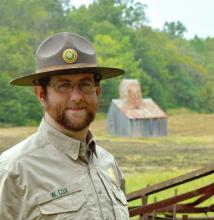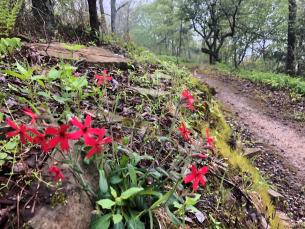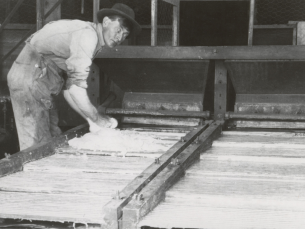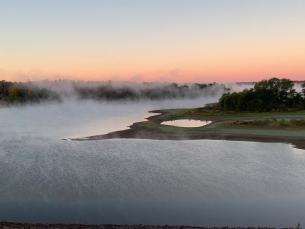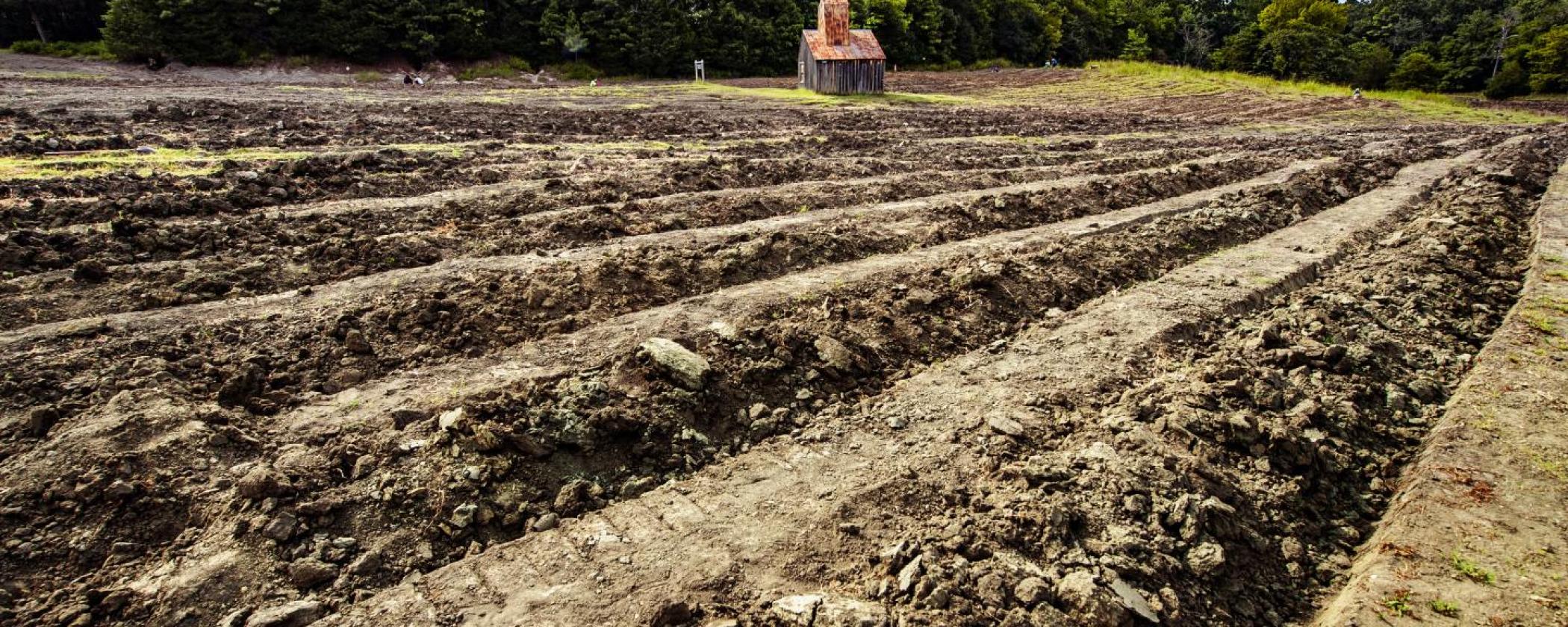
Plowing the Search Area
By: Waymon CoxGreetings from Crater of Diamonds State Park! We get lots of questions about plowing the search area, such as when it was last plowed, when it will be plowed again, and how plowing helps uncover diamonds.
The park uses a bulldozer pulling a bedding plow to work the search area into windrows. We follow the lay of the land when plowing to help water drain from the surface and promote natural sorting of the diamond-bearing soil. We plow about once a month as weather allows, or six to eight times each year.
Though we don’t have a set schedule for each month, the best conditions for plowing are when the dirt is dry and rain is in the forecast. After rainfall, the surface soil dries fairly quickly into a crust that may be several inches thick. However, it can take a week or more of warm temperatures to dry out dirt that is deeper underground. If we try to plow while the soil is too wet, the dirt will clump together in large clods and our heavy machinery may get stuck.
Plowing the diamond search area serves several purposes. It resets the soil by smoothing rough areas, refilling small holes, and exposing unsearched material. It also promotes diamond finds by breaking apart the dirt, releasing gravel and diamonds. Lighter materials wash away during rainfall, and heavy gravel and diamonds concentrate in lower areas. Many people visit after a good rainstorm to take advantage of peak diamond searching conditions. Even when sections haven’t been plowed in a long time, heavy gravel and diamonds continue to collect in cracks and crevices along the surface of the search area.
We usually plow when there are fewer people in the field, or before the park opens for the day. It can be tempting to follow close behind the plow and look for the gleam of a freshly-uncovered diamond. However, for the safety of our guests, we ask that everyone stay at least 100 feet away from the machinery.
Plan your next visit after rainfall to search the freshly-plowed soil and improve your chances of finding a diamond!
